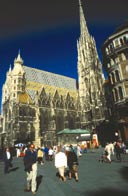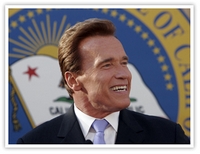Receive our newsletter
Your e-mail address is only used to send you our newsletter and information about the activities of Strasbourg Europe. You can always use the unsubscribe link included in the newsletter.
Austria’s history has been marked by the virtually uninterrupted reign of the Habsburg dynasty. The first of this line, Rudolph I, became the monarch of the German Holy Roman Empire in 1273.
 Located at the point where the Alps open out onto the Pannonian plains, on the right bank of the river Danube, Vienna is today a major industrial and commercial crossroads. Traditionally the center of power of the German Holy Roman Empire and of the Habsburgs, Vienna is brimming with architectural features from
Located at the point where the Alps open out onto the Pannonian plains, on the right bank of the river Danube, Vienna is today a major industrial and commercial crossroads. Traditionally the center of power of the German Holy Roman Empire and of the Habsburgs, Vienna is brimming with architectural features from
the medieval period (including the gothic cathedral of Saint Stephen), long promenades running past palaces and baroque, neogothic or neoclassical buildings (the Opera, the Parliament, the City Hall, the Art History Museum and the Burgtheater). As a meeting point of the Latin, Germanic, Magyar and Slavic cultures, Vienna developed very early on a cultural vibrancy that is entirely its own. As the town of some of the world’s greatest thinkers and writers (including Freud, Wittgenstein or Zweig) or composers (Mozart, Strauss), the city remains synonymous with these great individuals, even today.
Saint Stephan’s Cathedral © ANTO/ Mayer

 Three quarters of the Austrian landscape is covered with mountains, and skiing is an integral part of Austrian culture. More than just a sport, skiing is a way of life here. The Austrian Alps cover approximately
Three quarters of the Austrian landscape is covered with mountains, and skiing is an integral part of Austrian culture. More than just a sport, skiing is a way of life here. The Austrian Alps cover approximately
60% of the surface area of the country. Thanks to its favourable climatic conditions, there are more than a thousand winter sports resorts dotted throughout the country, with some 22 000 km of Alpine ski slopes and 16 000 km of cross country slopes. In summer as well as in winter, it offers some of Europe’s finest ski slopes and the best hiking trails. Beginners or experts alike never fail to be impressed by everything that Austria has to offer. This snowy wonderland has enabled Austria to produce many great champions such as Toni Sailer, Karl Schranz, Annemarie Moser-Pröll, Franz as the “Herminator” or Benjamin Raich.
© ANTO/ Mayer

Your e-mail address is only used to send you our newsletter and information about the activities of Strasbourg Europe. You can always use the unsubscribe link included in the newsletter.
Information Center
on the European Institutions (CIIE)
Europe Direct Information Center
All rights reserved to the CIIE
Non-profit organization
Mailing address
1 allée Kastner
67000 Strasbourg
France
Visitors entrance
8 rue Boecklin
67000 Strasbourg
France
To provide the best experiences, we use technologies such as cookies to store and/or access device information. Consenting to these technologies will allow us to process data such as browsing behavior or unique IDs on this site. Failure to consent or withdrawing consent may adversely affect certain features and functions.
Europe Direct network
The CIIE team
Contact information and opening hours
Lieu d’Europe
The CIIE offices
Contact us
CIIE’s Documentation Centre & Publications
School presentations & Activities
Borrowing of learning material
Activities for the general public
Institutions of the European Union in Strasbourg
Institutions Under the Authority of the Council of Europe
Other European Organisations in Strasbourg
Sessions of the European institutions in Strasbourg
Visiting the institutions
Map of the European district of Strasbourg
Institutions in Strasbourg in photos
Discover artistic Europe
National holidays of the member states of the Council of Europe